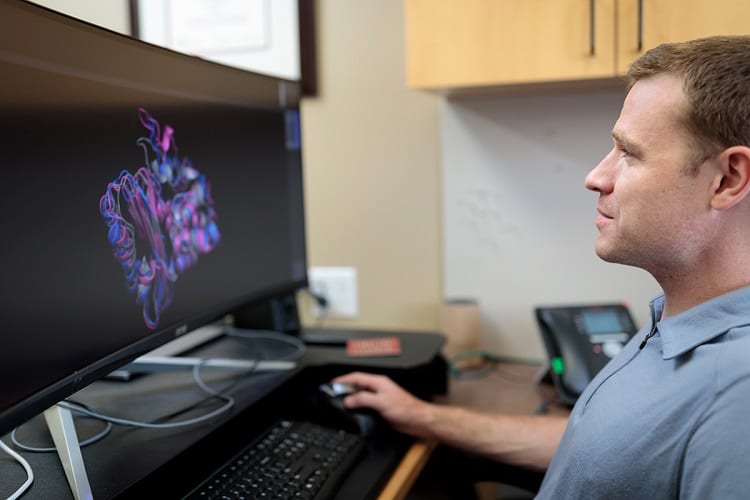When Greg Bowman presents a slideshow about the proteins he studies, their 3D shapes and folding patterns play out as animations on a big screen. As he describes these molecules, it might be easy to miss the fact that he can’t really see his own presentation, at least not the way the audience does.
Bowman, assistant professor of biochemistry and molecular biophysics at Washington University School of Medicine in St. Louis, is legally blind. He also now leads one of the largest crowd-sourced computational biology projects in the world. The effort is aimed at understanding how proteins fold into their proper shapes and the structural motions they undergo as they do their jobs keeping the body healthy. Proteins are vital cellular machinery, and understanding how they assemble and function — or malfunction — could shed light on many of the most vexing problems in medical science, from preventing Alzheimer’s disease, to treating cancer, to combating antibiotic resistance.
